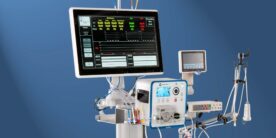

insights
EU MDR Compliance – Why Is Our Industry Still Struggling?
The European (EU) Medical Device Regulation (MDR), adopted in 2017, was a sizeable update to medical device regulations. The EU MDR is a new set of regulations governing the production and distribution of medical devices in Europe, and more specifically, designed to modernize the EU regulatory system to better address the current needs of the market and new technologies.
New to the EU MDR is a requirement that every medical device must include sufficient clinical evidence to demonstrate compliance, dependent on the device class. This new requirement will significantly impact manufacturers selling existing devices without readily available clinical data.
Devices that received Conformité Européenne – a CE mark – under the previous EU Medical Device Directive (MDD) are allowed to continue to market in the EU but will need to be recertified under MDR expectations by a Notified Body (NB). Compliance with the regulation is mandatory for medical device companies to sell (or continue to sell) their products in the EU marketplace.
But medical device companies are continually struggling with EU MDR compliance, specifically, with their EU MDR gap assessment, compiling their remediation strategy, and effectively packaging and communicating their data to the NBs.
As we approach the original compliance deadline of May 2024, NBs are faced with a backlog, prompting the European Commission to propose extending the transition period. It still remains questionable whether vast majority of medical device companies will meet the new requirements even with the additional runway.
The question is, why are medical device companies still struggling with EU MDR compliance?
EU MDR Compliance – Roadblocks and Recommendations
Compliance with EU MDR presents medical device manufacturers with a number of familiar challenges and hurdles to overcome, including increased clinical evidence requirements, device classification changes, the need for more robust post-market surveillance (PMS), and post-market clinical follow-up (PMCF) activities.
However, there are several bigger challenges that are less obvious and seem to be catching manufacturers off guard, including:
- Organizational roadblocks and inefficiencies
- Cross-functional resourcing imbalance
- Difficulties in finding qualified talent
- Policy, process, and procedural gaps
- The complex relationship between indications, labeling claims, supporting evidence, and regulatory history of legacy devices
Let’s dive further into these challenges.
Organizational Roadblocks and Inefficiencies
We frequently observe medical device clients, particularly larger companies, struggling with determining who is responsible for specific tasks at various points in their product lifecycle. An indirect requirement of the EU MDR is that where individual functions previously operated independently now must work collaboratively and in real time to ensure product safety and performance.
Important documents like the Clinical Evaluation Report (CER) require comprehensive summaries of medical safety data, benefit-risk assessments, and clinical study data from qualified Subject Matter Experts (SMEs). Fitting this collaborative workflow into existing siloed organizational structures often leads to noncompliance and employee dissatisfaction.
To meet the increased demands of EU MDR compliance, companies must assess and redesign their organizational structure, roles and responsibilities, and governance structure to ensure clear lines of communication and decision-making. In turn, this will lead to increased efficiency, compliance, and employee satisfaction.
Cross-Functional Resourcing Imbalance
Similarly, resourcing imbalance from one function to another may create bottlenecks that lead to reactionary finger-pointing across functions, high rates of burnout, and delaying of key regulatory timelines. Often, this outcome stems from a company’s senior leadership’s initial underestimation of the depth of the EU MDR’s implications and expectation that functional leadership groups – typically from clinical and/or regulatory – handle compliance with the increased requirements.
Difficulties in Finding Qualified Talent
As a result, clinical and regulatory teams are able to hire additional resources while other functions (e.g., quality assurance) retain the same headcount. As the overall workload increases, clinical and regulatory teams have an increased capacity while other parts fall behind, and inevitably, collaboration breaks down. To avoid this common outcome, it is critical to quantify the workload and capacity of each function (and functional team member) so that a resourcing model may be built to create balance across the organization before complex problems arise.
Policy, Process, and Procedural Gaps
In addition to the organizational and resourcing struggles medical device companies face, policy, process, and procedural issues are right at the forefront. As with the previous issues, redesigning processes, work instructions, and handoffs is a nuanced task requiring ample coordination and cooperation. Where functional Standard Operating Procedures (SOPs) used to begin or end with handoffs to other functions, there are now numerous stages with cross-functional inputs and outputs and shared activities that need to be detailed.
Navigating process flows, relationships, and dependencies is a cumbersome and complex task requiring dedicated time and effort by qualified individuals to meet the EU MDR demands.
Complex Relationship Between Indications, Labeling Claims, Supporting Evidence, and Regulatory History of Legacy Devices
Another major operational undertaking is sorting through potential decades worth of design changes, regulatory history, labeling claims, and supporting clinical evidence (or lack thereof) for a legacy device. To determine whether the clinical evidence requirements of the EU MDR are supported, it’s necessary to map out all of the existing clinical evidence against the indications, labeling, and any other claims for the device.
Gaps identified can be used to map out PMCF activities to ensure the continued safety and performance of the device. In some cases where there are significant gaps, it may be necessary to modify the indications and labeling, or even remove claims altogether. Developing and maintaining a detailed claim and evidence matrix may help to prepare for the question, “is this supported by clinical evidence?” which is extremely useful when interacting with your NB.
Conclusion
These examples require a significant amount of effort to overcome and often pull employees away from moving their product development forward. Often, bringing in a third party, like Halloran Consulting Group, to work across teams may be helpful to get a fresh perspective and keep timely projects moving on schedule.
If you are a medical device company seeking EU MDR compliance strategy and support, and organizational leadership support, contact a member of our team today.
We’re here to enable EU MDR compliance. We’re ready when you are.


